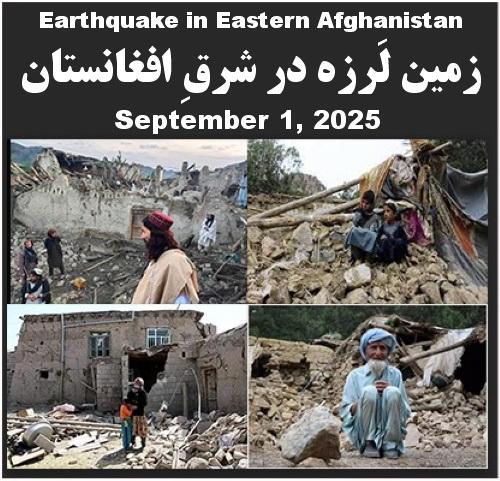By Hasse-Nima Golkar
“Death in Every Home”
Around midnight on September 1, 2025 (today), a powerful earthquake measuring 6.0 struck the provinces of Kunar and Nangarhar. Although there are no precise statistics yet, more than 1,500 people have been reported dead, over 2,500 injured, several villages completely destroyed, and a very large number of residents remain trapped under the rubble. Rescue efforts in some of the hard-to-reach mountainous regions — accompanied by strong winds and heavy rain — are facing extremely serious obstacles.
The affected regions are not only suffering from this earthquake; residents of these provinces have already experienced difficult times due to floods and droughts. Most of the destroyed “houses” were made of mud and stone, the result of structural poverty, lack of basic construction materials, and no earthquake-resistant reinforcement.
On the one hand, there has been a sharp decline in “humanitarian aid” while most people in the country have already passed the brink of catastrophe; on the other hand, lack of necessary budget, inability to manage the crisis, and the Taliban’s political-economic indifference have all joined — along with the betrayal of former politicians — to leave millions of people with poverty, misery, and suffering they surely do not deserve.
The failure to focus on prevention and reinforcement of vulnerable areas once again highlights the structural weaknesses and misguided priorities of Afghanistan’s terrorist and extremist Islamic rule.
This human tragedy once again shows how deeply the working people of Afghanistan — especially those in rural and mountainous regions — are caught in the terrifying cycle of humanitarian crisis, poverty, inequality, and injustice.

